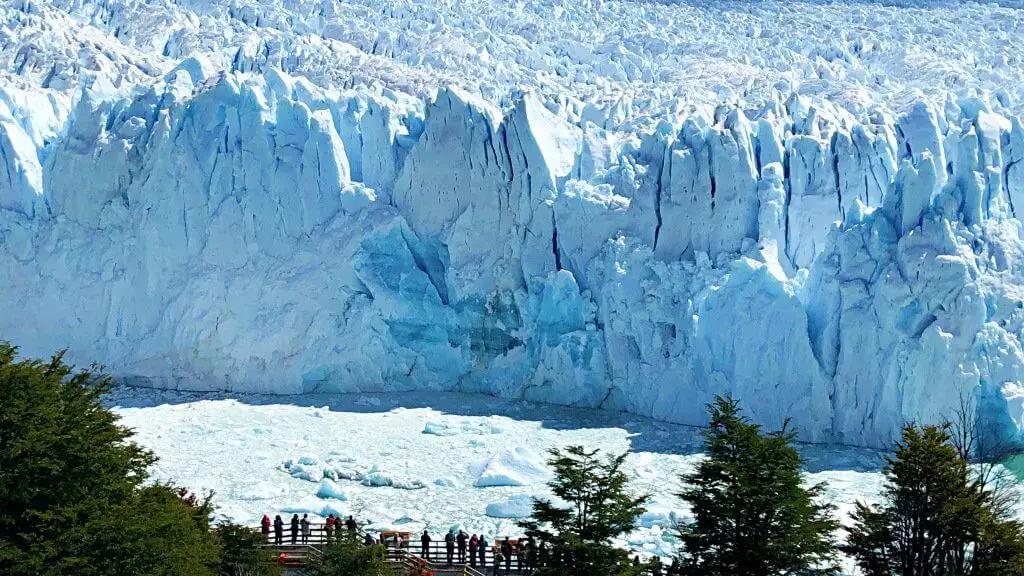
Central and South America are some of my favorite places in the world. There is a mix of incredible nature, well-preserved ruins, strong indigenous cultures, great shopping, delicious food, and, of course, so many wonderful things to do and experiences to have.
If you want to travel Central America or are planning a trip to South America, then this combined Central America Travel Guide and South American Travel Guide will help you. My Central and South American trip planner has plenty of South America trip ideas and the practical information you need to visit South America and central America easily and travel South America easily and safely.
Read on to find detailed country guides, top things to do, how to get there and around, where to stay, tips for staying safe, booking resources and more.
Country Travel Guides
There are so many amazing South American countries to visit, that is can be difficult to know where to go in Latin America, what to see in South America for the best South American vacations, or the best vacation spots in Central America. Here are my top picks.
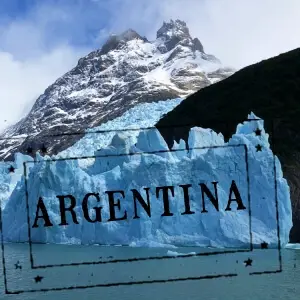
ARGENTINA
Argentina is one of the best places to visit in South America for wildlife and hiking. There are penguins and seals in Patagonia. Ushuaia is the southernmost city in the world, located on the beautiful Beagle Channel and the starting point for cruises to Antarctica. El Chalten is the self-proclaimed Hiking Capital of the World. The hikes to Mount Fitzroy and Cerro Torre are stunning! There are glaciers galore near El Calafate and lovely lakes and great wines at Bariloche. Buenos Aires is vibrant, fun and feisty – don’t miss a tango show!
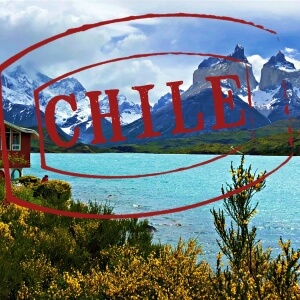
CHILE
Chile makes one of the best South American vacations because there is almost every kind of environment within the one country. From the otherwordly salt plains of the Atacama Desert in the north; to the picturesque Lakes District and fascinating Chiloe Island; and further south still down to Patagonia where you can take a boat trip through the fjords and hike the breathtaking Torres del Paine National Park. The capital Santiago is nestled dramatically at the foot of the Andes and surrounded by one of the many wine-growing regions in the country. Plus, there is Easter Island 2,235 miles (3,600km) off the mainland – famous for the statues and home to the annual Tapati Festival.
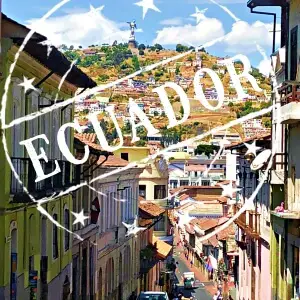
ECUADOR
Ecuador is one of the best countries to visit in South America because it is compact, but incredibly diverse. Where else can you dive with hammerhead sharks in the Galápagos Islands, visit the colored houses in tropical coastal Guayaquil, soak in hot springs surrounded by active volcanoes, buy handicrafts in Andean villages, cycle down the Andes past dozens of waterfalls and stay in a jungle lodge in the Amazon? And straddle the equator? The country is named Ecuador (Spanish for “equator”) for a reason.
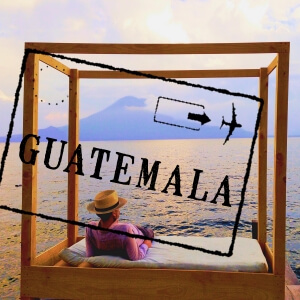
GUATEMALA
Guatemala is one of the best places to visit in Central America because it has such variety to offer. It has some of the most well-preserved ruins in the world in the former Mayan city, Tikal. Some of the most beautiful scenery in Lake Atitlan, framed by not one, but three perfectly comical volcanoes. An extremely vibrant indigenous culture, best seen in the highland villages and markets like Chichicastenango. And one of the finest examples of Spanish colonial architecture in Antigua. Plus awesome activities like zip lining, caving and chocolate-making.
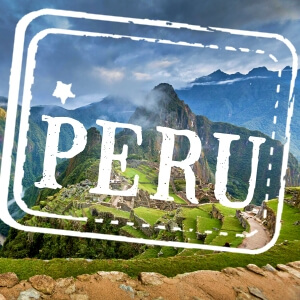
PERU
Peru makes it on the list of the best South American countries to visit for many reasons. Machu Picchu, the Inca Trail, Cusco and the Sacred Valley get most of the glory, but there is so much more. Fly over the mysterious Nazca Lines, visit floating villages on Lake Tititicaca, explore the ruins at Chan Chan, hike the incredible Colca Canyon, take an adrenaline-pumping white water rafting trip down the Apurimac River, buy and learn how to make local handicrafts in the Mantaro Valley … There is no shortage of incredible things to do in Peru.
Best Things to Do in South America & Best Things to Do in Central America
If you are wondering what to do in South America or Central America, then look no further. Here are my suggestions for the best experiences in South America.
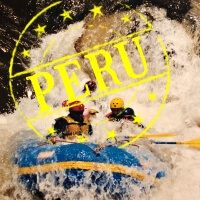
Brave Class V Rapids White Water Rafting in the Black Canyon
Widely considered one of the top ten white water rafting trips in the world, the three-day trip through the Apurimac Canyon is not for the faint-of-heart.
The calm stretches of gentle rowing give you time to admire the steep walls of the canyon and the condors high overhead. But it is the Class IV and V rapids (the wildest, craziest rapids that you can navigate) that will occupy most of the trip. This is pure insanity!
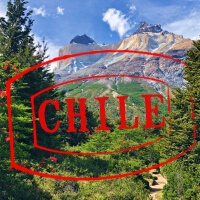
Hike French Valley in Torres del Paine, Patagonia
Torres del Paine in Chilean Patagonia regularly tops the South America ‘things to do’ lists because it has some of the best hiking South America has to offer and some of the most spectacular scenery in the world.
My favorite hike is up French Valley for 360° views of the towering Cuernos del Paine, dramatic French Glacier, craggy snow-capped peaks and brilliant blue alpine lakes.
Read more about hiking French Valley in Torres del Paine, Patagonia
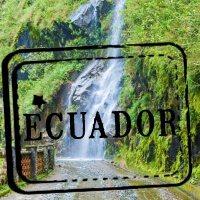
Cycle down Andes along the Route of the Waterfalls
Rent a bicycle in Baños, high in the Andes, then slowly cycle down the Route of the Waterfalls. Stop off at the Pailon de Diablos (Devil’s Cauldron).
The scenery changes from cloud forest to rain forest. When you get to Puyo, put your bike on the roof of a bus and head back up the mountain to Baños. Relax at the end of the day in one of the natural hot springs that give the town its name.
Read more about cycling the Route of the Waterfalls in Ecuador

Dance and Watch Tango in Buenos Aires
Tango is the most passionate and dramatic of dances, and it was born in Argentina. There is nothing quite like watching a spectacular show is a tiny dance hall in Buenos Aires.
But why stop there? Take a lesson and join a milonga and dance the night away together with Argentinians.
This easily makes my list of one of the most fun things to do in South America.
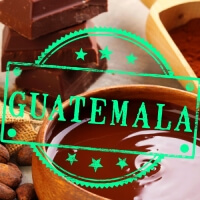
Learn How to Make Chocolate in Guatemala
If you love chocolate, you will love making chocolate. The Mayans discovered how to make hot chocolate from cocoa beans and you can walk in their footsteps in a chocolate-making workshop in Antigua de Guatemala. Roast and grind beans, make chocolate tea and Mayan and Spanish hot chocolate and finish by making your own truffles filled with your favorite natural flavors.
Ten Top Ten Top Things to Do in South America and Central America
For the top 10 things to do in South America & Central America, in addition to the five things above, add:
- Hike the Inca Trail to Machu Picchu
The trail is perhaps a little too popular these days, but there’s a reason. Despite the crowds, it is still one of the best hikes in South America. The steep hike up and down forested hills goes via several fascinating Inca sites. There are plenty of places to go hiking in South America, but none of them have an ending this stunning.
On the last morning, you will get up early and hike the last stretch to Machu Picchu. Chances are it will be shrouded in mist. As you sit, gazing intently into the clouds, wisps will clear, give tantalizing glimpses of a breathtakingly beautiful lost city. Eventually the glimpses become firm views, and the entire city of Machu Picchu is laid out below, covering the top of a mountain and framed by more.
It gets crowded as the daily trains arrive, but this early morning view makes the entire trek worthwhile.
Book a multi-day guided hike on the Inca Trail to Machu Picchu here
- Tapati Festival, Easter Island
Easter Island / Isla de Pascua/ Rapa Nui is famous for the legendary statues that dot the island. These are reason enough to visit the isolated Chilean island.
However, try to time your visit to experience the annual Tapati Festival. This two-week long festival celebrates local culture and heritage through a series of competitions. Events include gastronomical, jewelry-making and wood-carving competitions. Performance contests include dance, storytelling and body painting. Sports events include traditional canoeing and spear fishing alongside less common events Haka Pei (hill tobogganing) and Tau’a Rapa Nui (Easter Island Triathlon).
Read more about the Easter Island Tapati Festival
Book a four-day trip to Easter Island here
- Amazon jungle cruise
Cruising down the Amazon River through the jungle is incredible. Longer cruises are possible, but you can also stay in a jungle lodge and do short cruises looking for wildlife. This is one of the most iconic things to see and do in South America – just try not to think about the piranhas and anacondas.
Book a 3-day trip to a jungle lodge and Amazon River cruises here
- Dive Galápagos Islands
Some of the best diving and snorkeling in the world is around the Galapagos Islands, making the islands easily one of the best places to travel in South America. The nature here is legendary, and you will want to spend time with the blue footed boobies and tortoises as well as the marine iguanas. Beneath the sea is a whole new world. Live-aboard dive trips typically go to the northern islands, since this is the best diving.
Read about planning a trip to the Galapagos
See the range of Galapagos trips available on Viator here
- Wine tasting in Chile
If you love wine, you will not want to miss visiting Chile’s wine growing region. Visit vineyards and cellars, sample the wines and buy some to take home. A favorite is the Concha y Toro winery near Santiago and the spooky Devil’s Cellar.
Read more about the Concha y Toro wine winery tour
Book the Concha y Toro Wine tour from Santiago here
Best South America Trips: Suggested Itineraries
If you aren’t sure where to visit in South America, here are some classic itineraries featuring top South America landmarks, the best cities in South America and fun things to do.
Best itinerary for South America 1: Southern Patagonia
- Buenos Aires – El Calafate – El Chalten – Puerto Natales- Torres del Paine – El Calafate
- Santiago – Punta Arenas – Ushuaia – Puerto Natales – Torres del Paine – Punta Arenas
South America travel itinerary 2: Galapagos Islands
- Quito – Banos – Quito – Guayaquil – Galapagos – Quito
South America trip itinerary 3: Southern Brazil
- Sao Paulo – Iguazu Falls – Florianopolis – Rio de Janeiro
Best South America travel routes 4: Peru
- Lima – Cusco – Sacred Valley – Machu Picchu – Arequipa – Colca canyon – Nasca – Lima
Central America itinerary 5: Guatemala
- Antigua – Chichicastenango – Lago Atitlan – Guatemala City (transit) – fly to Tikal – Guatemala City (transit)
Long trip
“How long to travel South America?” depends on your time and budget. If you are planning to spend several months backpacking around, the best route to travel South America is south down the Andes, then north along the west side through Brazil.
How Much Does it Cost to Travel South America?
Central and South America travel costs vary quite a lot from country to country. In general, the cost of travelling South America is much lower than in North America, Europe and Australia, but your budget for South America will depend on which country or countries you go to.
Countries like Guatemala, Peru and Ecuador are very cheap and it’s possible to travel for $30 a day. Chile is more expensive, but even there, you can get around on about $40 day (though $150/ day is more likely for a normal vacation). Argentina has period currency devaluations, which make it cheaper.
Essential Information for Latin American Travel
First question first. Where is South America and where is Central America?
South America is just south of North America. The narrow strip of land connecting them is Central America (which is technically part of North America, but I’ve put together with South America, because I think they are experientially and culturally more similar).
Latin America is most Central and South America, excluding the parts that don’t have a Spanish or Portuguese influence.
Currency
The currency is different in every country. Several countries like Argentina and Chile have pesos. They are completely different currencies (in the same way that US dollars and Canadian dollars are different). The symbol used for pesos is the $ sign, which can be confusing.
The currency in Ecuador, El Salvador and Panama is actually the U.S. dollar (USD), which makes it easy for Americans.
A couple of words on pronunciation. In Spanish and Portuguese, plurals of words ending in a consonant are formed by adding ‘es’. This is pronounced “ES”. So, for example in Peru, there is one sol and two solES (not “sols”) and in Guatemala, there is one quetzal and two quetzalES.
In Portuguese, “r’ is pronounced like and English “h”, so the Brazil currency of “reales” is prnounced “he-ah -les”.
What currencies are used in Central America and what currencies are used in South America?
The currencies of each country are:
- Argentina: Argentine Peso (ARS)
- Belize: Belize Dollar (BZD)
- Bolivia: Bolivian Boliviano (BOB)
- Brazil: Brazilian Real (BRL)
- Chile: Chilean Peso (CLP)
- Columbia: Columbian Peso (COP)
- Costa Rica: Costa Rican Colón (CRC)
- Ecuador: U.S. Dollar (USD)
- El Salvador: U.S. Dollar (USD)
- Guatemala: Guatemalan Quetzal (GTQ)
- Guyana: Guyanese Dollar (GYD)
- Honduras: Honduran Lempira (HNL)
- Nicaragua: Nicaraguan Córdoba (NIO)
- Panama: U.S. Dollar (USD) – used in conjunction with the Panamanian Balboa (PAB)
- Paraguay: Paraguayan Guaraní (PYG)
- Peru: Peruvian Nuevo Sol (PEN)
- Suriname: Surinamese Dollar (SRD)
- Uruguay: Uruguayan Peso (UYU)
- Venezuela: Venezuelan Bolivar Soberano (VES)
For current exchange rates, check here.
Visas
For citizens of many European countries, the United States, Canada, Australia and New Zealand, visas are actually not needed for most Central and South American countries. But always check!!! Visa requirements can change overnight and I’m not purporting to be a visa expert. If you are traveling overland, pay special attention to any requirements for onward tickets.
Brazil has now removed the visa requirement for US citizens that existed for many years.
Check out your home country’s official government visa websites for:
For citizens of other countries, use this helpful website (though it’s best to always check with the embassy as well).
Time Zones
There are five time zones in Central and South America.
- Central America down to Costa Rica and Easter Island are on the same time as North America’s Central Time (Greenwich Mean Time GMT -6)
- Panama, Colombia, Ecuador and Peru are the same as Eastern Standard Time (GMT -5)
- Venezuela is half an hour ahead (GMT-4.5)
- The western half of Brazil, Guyana, Bolivia, Paraguay and Chile are one hour ahead of Eastern Standard Time (GMT-4)
- Suriname, French Guiana, the eastern half of Brazil, Uruguay, and Argentina are another hour ahead (GMT-3)
You can see a map here.
Languages
Most countries in Central and South America have Spanish as the official language. There is also a large number of indigenous languages spoken. In Guatemala alone, there are 24 languages spoken, including 21 Mayan languages. However, if you speak Spanish, you will get by easily.
English is spoken increasingly in main tourist areas, but if you speak at least a little Spanish, it will be much easier. Latin American Spanish is somewhat different from European Spanish, and there are even differences in pronunciation, grammar and vocabulary between different countries in Latin America. Chilean Spanish is well- known for being spoken very quickly and Argentinian Spanish has distinctive grammar and pronunciation. However, if you know any variety of Spanish, you will be able to communicate easily enough.
The main language in Brazil is not Spanish; it’s Portuguese. This is a dialect of European Portuguese and is quite different. In writing, Spanish and Portuguese are vaguely similar. When spoken, they are very different. Because of Brazil’s size and population, Portuguese is technically the most spoken language in South America.
While Spanish and Portuguese are the main languages spoken in South America, the people in several countries speak other languages. French is the official language in French Guiana; Dutch is spoken in Suriname; and English is the official language of Guyana. There are also small pockets of English-speaking areas in Caribbean Central America, e.g. Belize and the Bay Islands in Honduras.
How to Get to Latin America
If you are travelling to South America from Europe or Australasia, you will probably fly to South America via North America. There are a lot of flights from Miami and Atlanta, Houston and Los Angeles. Flights often go via Central America. There are also many direct flights from New York. Some of the best airlines to South America are Latin American Airlines like Copa, Avianca and LAN, as they have frequent connections.
Check Skyscanner and Momondo for cheap flights. They search thousands of flights to find cheap flights.
Can you drive from north America to South America?
If you are wondering if you can drive the entire length of the Americas, the answer is actually no. I traveled overland from New York City to Ushuaia among the Pan American highway that spans the length of Latin America except for one place. The southern part of Panama where it borders the northern part of Colombia is called the Dorian Gap, because the thick impassable jungle there has no road – creating a “gap” in the highway. If you are traveling overland, you will need to fly or find a boat from Panama City to Cartagena.
Check Skyscanner and Momondo for cheap flights. I use them to find cheap flights.
How to Get Around: Travelling in South America
How to travel South America depends on your budget, how comfortable you want to be and how much time you have.
Unless you are sticking to one area, travelling through South America invariably involves covering a lot of distance, so you will need to consider each of these things when deciding how to travel around South America.
Plane
This is the best way to travel around South America if you don’t have much time but want to see some different areas is to fly. Using a local airline will often be the cheapest, but it is good to use a website that checks multiple airlines, including budget carriers. I use Skyscanner and Momondo . Click on the links to search for your dates and destinations.
If you are flying domestically, make sure you are at the right airport. Buenos Aires, for example, has two different airports – one (EZE) for most international flights and another (AEP) for domestic flights. The airports are nowhere near each other.
Bus
Bus is the best way to travel South America and Central America if you are on a budget. It is not only the cheapest way to travel South America, but most South America bus travel is comfortable; most likely similar to buses or coaches in your home country.
There are exceptions though. When it comes to bus travel, South America tends to be more comfortable than Central America. In Central America, most of the buses are old U.S. school buses. So, there is very little legroom; luggage is often stored on the roof and inside is usually very crowded. The suspension is also often not that great. However, there are mini-vans for tourists that ply the routes between the most common tourist destinations in many places, as an alternative to the “chicken bus”.
Train
There are actually very few trains left in Latin America, and these days, South America train travel is isolated to a few short trips.
If you want to read a book about train travel in Central and South America, I recommend The Old Patagonian Express: By Train Through the Americas (1989), Paul Theroux. You can buy it on Amazon here.
Car Rental
Hiring a car is, in my opinion, the best way to see South America if you can afford it, because having a car gives you the flexibility to go and stop whenever and wherever you want. There can be great wildlife viewing from the side of the road, and with a car, you can stop whenever you see a guanaco or rhea.
I use RentalsCar.com to book cars, because they search all of the major car companies for the best deal. Book a rental car here.
If you are driving in Patagonia, hold on to the car doors when you open them, as it can be VERY windy, and get fuel wherever you see a gas station, as they are few and far between.
Where to Stay in Latin America
There are plenty of options for accommodations in Central and South America. The best places to stay in South America will depend on exactly what you’re looking for (read my post for tips on How to Choose the Perfect Hotel).
Types of accommodations in South America and Central America
Hotels. There are many hotels, including the usual chain hotels, as well as other hotels, including boutique hotels.
Posadas. They are inns or small hotels, cheaper than regular hotels.
Hostales. While the name is similar to the English word ‘hostel’, they are not the same thing. An hostal is a family run pension or guesthouse. They usually have private bedrooms and a restaurant of some kind. They are typically cheaper than a hotel. Hostal-residencias are similAr but don’t have anywhere to eat.
Hostels. In main backpacker places, hostels with dorm rooms exist. Outside of these areas, dorm beds are not that common. Many hostels also offer single, double or triple rooms. They often have a common area with or without a bar to hang out in, and many may have a kitchen you can use to cook your own food.
Unique hotels in Central America
- Andaz Costa Rica Resort at Peninsula Papagayo, Costa Rica. Choose a bungalow with views of the surrounding jungle and the Pacific Ocean. Check prices and availability here.
- Rio Perdido Hotel and Thermal River, Costa Rica. Stay in the middle of the jungle at the foot of a volcano and join in a range of activities including soaking in natural hot springs, zip lining, hiking and jungle canopy tours. Check prices and availability here.
- Finca Ometepe, Nicaragua. Stay in a farmhouse on Ometepe island, with two perfect conical volcanoes in the middle of an inland sea. Check prices and availability here.
Unique hotels in South America
- Palacio de Sal, Bolivia. Where else can you stay in a hotel made entirely of salt? Check prices and availability here.
- Uros floating village, Peru. There are several hotels set up on the floating reed islands in the middle of Lake Titicaca. Check here to find the best Uros hotel for you.
- Ecocamp Patagonia, Chile. Sleep in a dome near the base of the torres (towers) that give Torres del Paine National park its name. Check prices and availability here.
Planning a Trip to South and America and Central America
Planning a trip takes time and effort. it is also one of my favorite things to do. To help make your planning easier, Use my Trip Planner, a step-by-step guide with checklist of things to do at each stage of your trip planning process.
You can also check out my complete Resources page for more helpful trip tools.
When to Go: The Best Time to Visit South America and Central America
Wondering when to visit South America? The best time to travel South America depends on where you go.
- The best time to go to South America for hiking in Patagonia is the southern summer (December – February). Shoulder seasons are fall/ autumn (late-march-April) and spring (October-November). However, Patagonia can be cold even in summer – it snowed on Christmas Day when I was there the first time. Late January – early February is the warmest and driest time of year in Patagonia.
November – January are the windiest months of the year in Patagonia, with November the windiest of all. Winds in Patagonia are much stronger than in most places! There was one day in Torres del Paine that we couldn’t hike at all because it was so windy, and car rental places warn you to always hold the car doors so that they don’t get blown off!
- The best time to travel to South America for wine tours and tastings in Chile and Argentina is March. This is fall and the grape harvests and accompanying wine festivals.
- The best time of year to visit South America for the Amazon or Pantanal is May and early June. The main rainy season is ending, so river levels are high enough for boat trips, but wildlife sightings are more frequent in the drier weather.
- They best months to visit South America for Galapagos Islands trips depends on what you want to see and do. December – May are best for green turtles, marine iguanas, albatrosses, and cormorants. These are the wettest, warmest and least windy months of the year. June – November is the dry season (though it is also the least sunny and windiest time of year). This is the time of year to see hatchlings, flamingos, sea lions and penguins as well as for diving.
- The best time to travel to South America through the Andes (Ecuador, Peru, Bolivia) is May – October, the dry season.
South America Travel Advice: Travel Tips for South America and Central America
South America travel safety
If you are wondering “Is it safe to travel to South America?”, the answer is yes. Travel in Central and South Americans pretty safe, but there are some basic precautions you should take to stay safe.
Chile and Argentina are probably the safest countries in South America, but very few places are dangerous. Venezuela is dicey with the current political situation, but even Colombia is safe these days. That being said, you still need to be careful – and situations do change, so always check before leaving.
Some tips for safe travel in South America and Central America
Know common scams and how to avoid them
One of my top South America travel tips is to know what scams you might encounter and know how to avoid them. I have a whole post about scams that I strongly recommend you read here.
Avoid isolated places
There is usually safety in crowds. So another of my travelling South America tips is to check with your hotel about areas to avoid.
Have anti-slasher bags
Back in the day, I used to put chicken wire inside my pack to stop potential slashers getting my gear. These days there are backpacks and other luggage with built-in soft invisible mesh that makes it very difficult for your bag to be slashed. I have one and love it. So, another of my tips for travelling South America is to invest in a Safe Pac. Click on the picture below to see it on Amazon.
This has straps you can fold away and turn it into a regular suitcase if you don’t want to have a backpack. It comes with a range of other safety features, like lockable zips, a wire to chain it to luggage racks and a flap to hide away your lock.
Sway with your backpack
Another piece of travel advice: South America does have some people who slash your bags with razors. In addition to the anti-slash bags, if you are wearing a backpack, when you are standing still, sway slightly from side to side so it’s harder for slashers.
Don’t keep valuables in your pockets
I had a phone pickpocketed on a crowded bus in Guatemala, so I learned this the hard way. You can read other mistakes I’ve made and how you can avoid making the same mistakes here).
Chain it
If your bag ends up in the roof a bus, go up there and chain it to the side rail. You can buy a wire for this here and a combination padlock here.
Never leave valuables unlocked in your room
Use the hotel safe. If your hotel doesn’t have one, lock your valuables inside your bags and if possible, chain your bags to the furniture.
Don’t wear expensive jewelry
Another of my travel tips: South America is generally safe, but it is better to be safer than sorry. Consider removing your wedding ring if you are concerned about possible muggings. It is unlikely, but if you are heading into a place that has a reputation for petty crime, it is worth taking an extra precaution.
Be aware of your surroundings at all times
You don’t need to be paranoid, but there is a skill to being aware of what is happening around you, so that you notice if something appears ‘off’ and can go on to high alert.
If you need help, ask in a shop or hotel rather than in the street
It is much more likely that some random person on the street will not have your best interests at heart. Shopkeepers are usually much more neutral and likely to give you correct directions.
Get Travel Insurance
The best safety advice I can give us to get travel insurance. In South America, travel insurance is essential. You just never know if you will get sick or something will happen to your stuff. If you have questions about travel insurance, read my post here that gives you the full lowdown.
I recommend Travelex. It has coverage for all you’ll need. You can choose the best travel insurance plan for your trip here or get a quote right now:
Tips for staying healthy in Latin America
There are some basic precautions to take to stay healthy and avoid Montezuma’s Revenge (as travelers’ sickness is often called here).
Safe water
In some countries, the tap water is fine to drink. If it isn’t, drink bottled water. To save plastic, you can buy a large bottle and fill up your own water bottle from it. I like the Que Water Bottle (check prices on Amazon here) because it gets smaller when you aren’t using it.
If the tap water is not safe to drink, then it is also not safe to eat salads (washed in tap water), have drinks with ice cubes (tap water) and brush your teeth from the bathroom faucet (tap water). Even be careful when taking a shower.
Altitude sickness
Altitude sickness is a very real possibility when you are high in the Andes. If you get it (tiredness, headaches and nausea are common symptoms), descend to a lower altitude immediately. Even a small change in altitude can make a big difference.
Different people are more susceptible to altitude than others. Age and fitness level has nothing to do with it.
The best thing to do is to try and prevent altitude sickness by ascending slowly and then taking time for your body to acclimate before going higher still. If you fly into Cusco from sea level and immediately head out on to the Inca Trail, you will have a much greater chance of getting altitude sickness than if you take ground transportation up and then spend a few days in Cuzco before attempting the trek to Machu Picchu.
Bug Spray/ Insect repellent
If you are going to the Amazon, use a strong bug spray with DEET to prevent bites. A strong one is Repel 100 (check the price on Amazon here).
Travel insurance
Again, having Travel Insurance can make a huge difference if you do get sick. If you don’t know a lot about travel insurance, I recommend reading my Guide to Travel Insurance so that you know what to look for when buying a travel insurance policy.
Other things to know for travel in South America and Central America
There are some things it is helpful to know about before you go.
Toilets
Toilets in Central America and South America don’t always have great plumbing and many of them are not set up to deal with toilet paper. In cheaper hotels and restaurants, therefore, you will often be expected to put used toilet paper in the bin beside the toilet rather than in the bowl. There will often be a sign to tell you. If you are not sure, just check the bin and see what other people have done.
Best Booking Resources for Travel to Central and South America
If you are ready to plan your next Latin American holidays, you can use these resources. These are what I use for my own travel planning and booking.
For booking tours and activities
- Viator They have great activities. You can search by categories such as Classes & Workshops and Cultural and Theme Tours.
- Get Your Guide. My other go-to activity company. They also have subcategories you can sue to filter out tours you aren’t interested in taking
For booking flights
- Skyscanner They search a huge database of flights, including many budget airlines, to find the cheapest price
- Momondo I always check this website too, as sometimes there can be a difference of a few dollars between the sites.
For finding a rental car
- Rentalcars.com I use this website to find the cheapest cars for my trips. Europe is a great place to drive around, as having a car gives you so much independence.
For booking accommodations
- Booking.com They have a huge selection and you can filter by price, location and type of accommodation.
- Air BnB For longer stays in the same place, it can be nice to live like a local and stay in an apartment. They can also often be cheaper than a hotel.
For buying gear
- Amazon A huge selection of travel goods.
- REI A great mission and great products, especially for outdoors and hiking.
For travel insurance
- Travelex My go-to travel insurance company.
Packing List for South America and Central America
I have created an International Travel Packing List with the essentials you will need on any international trip. Check it out for a comprehensive list of essential items.
Top three things to pack for a trip around South America
What to bring when traveling South America?
TOP THREE THINGS TO PACK FOR A TRIP TO SOUTH AMERICA AND CENTRAL AMERICA
1. Rain jacket
One of the essential things to bring when traveling through South America is a rain/ wind jacket. Many parts of Central and South America can be rainy and/ or windy. I always carry a rain jacket bundled up small in the bottom of my daypack. It also serves for some warmth on days when the weather gets cooler than I expected. Check out colors, sizes and prices on Amazon for men here and check out women’s rain jackets on Amazon here.
2. Plug and voltage adaptor
Another must-have in your South America packing list is a Plug and voltage adaptor with surge protection. Electricity varies between countries in Latin America in terms of the voltage and the plugs used. Electricity in many developing countries is also prone to surges, in which high voltages of electricity surge through the wires randomly, blowing out sensitive electronics. I always travel with a combination plug and voltage adaptor with surge protector in Central and South America. I travel with this one because is all three in one, and has three outlets, so I can recharge several things at once. Check prices on Amazon here.
3. A phrasebook
If you don’t speak Spanish, one of the essential things to take travelling around South America is a Latin American Spanish phrasebook. Buy the Lonely Planet Latin American Spanish Phrasebook on Amazon here.
Other things on your South and Central America packing list should be:
- At least one South America travel book. I like the Lonely Planet books. You can buy the South America Lonely Planet here and the Central America Lonely Planet here.
- Something to add to you ‘what to wear in South America’ list is a sarong. Yes, even if you aren’t heading to the beach. Sarongs can be wraps, towels, beach towels, picnic blankets, laundry bags, sheets and so many more things. They are versatile, weigh almost nothing and take up almost no room.
- Another item for your packing list for Central America should be a First Aid Kit (you can buy one here on Amazon) filled with Band-Aids, pain killers, alcohol wipes, antiseptic cream, anti-diarrheal tablets, seasickness medication and Pepto-Bismol or Tums.
- Finally, if you are still wondering what to pack for South America, don’t leave home without Travel Insurance. I recommend Travelex. It has coverage for all you’ll need. You can choose the best travel insurance plan for your trip here.
Best South America Guide Book and Central America Guide Book
The best guide book for South America and Central America is the Lonely Planet series. They have books by content, but also by country, region and even some cities.
You can check out Lonely Planet’s full selection for South America here and Central America here.
Suggested Reading: Best Books about South America & Central America
Here are some of my favorite books about South America/ Central America and books set in Latin America. They are a mix of travel books, novels and non-fiction. I hope they will inspire your trip and they are also good books to read while on your trip to Latin America.
1. One Hundred Years of Solitude (1995), Gabriel Garcia Marquez
This is one of my three favorite books of all time. I love magic realism and this story of s small Colombian town is truly magical. Even in translation, Garcia Marquez is poetic and lyrical. An absolute must-read.
2. In Patagonia (2003), Bruce Chatwin
If you are heading to Patagonia, get this book. Patagonia, the southern part of South America, is mostly windswept grasslands. Fantastical UFO-like clouds, swirled into shape by the legendary winds, float above. Isolated farms (estancias) eke out a lonely existence. Guanacos stare belligerently at passing strangers. This is the land of this book.
3. Travels in a Thin Country (1999), Sara Wheeler
The ‘thin country’ in question is Chile. Sara is a good storyteller and she brings to life her travels in Chile. Explore the country through her eyes before heading there yourself.
4. Turn Right at Machu Picchu (2012), Mark Adams
The premise of this book is Adams recreating the journey of Hiram Bingham III, the man who “discovered” Machu Picchu in 1911. He is hardly the explorer type, but sets off nonetheless. It’s an interesting framework to learn more about Bingham and, of course, macho Picchu. If you are going there, this is an easy introduction to the fascinating ruins.
5. The Full Montezuma (2005), Peter Moore
I’m a fan of Peter Moore. The tales of his travels are funny – and he tells a good tale for sure – but you also learn about the places he goes. This book is about his travels in Central America with a new girlfriend. It’s about Central America, but also about travelling with someone you really don’t know that well. A fun and easy read.
Book Your Latin America Trip Now
If you are ready to book your Central and/ or South American adventures, here are some resources to help you. I use these resources for my own travels and find them incredibly helpful.
For booking tours and activities
- Viator They have great activities. You can search by categories such as Classes & Workshops and Cultural and Theme Tours.
- Get Your Guide. My other go-to activity company. They also have subcategories you can sue to filter out tours you aren’t interested in taking
For booking flights
- Skyscanner They search a huge database of flights, including many budget airlines, to find the cheapest price
- Momondo I always check this website too, as sometimes there can be a difference of a few dollars between the sites.
For finding a rental car
- Rentalcars.com I use this website to find the cheapest cars for my trips. Europe is a great place to drive around, as having a car gives you so much independence.
For booking accommodations
- Booking.com They have a huge selection and you can filter by price, location and type of accommodation.
- Air BnB For longer stays in the same place, it can be nice to live like a local and stay in an apartment. They can also often be cheaper than a hotel.
For buying gear
- Amazon A huge selection of travel goods.
- REI A great mission and great products, especially for outdoors and hiking.
For travel insurance
- Travelex My go-to travel insurance company.
What’s on your Latin America bucket list? Comment below.
If you liked this post, please share the love and Pin it to your Central America Board and South America Board!
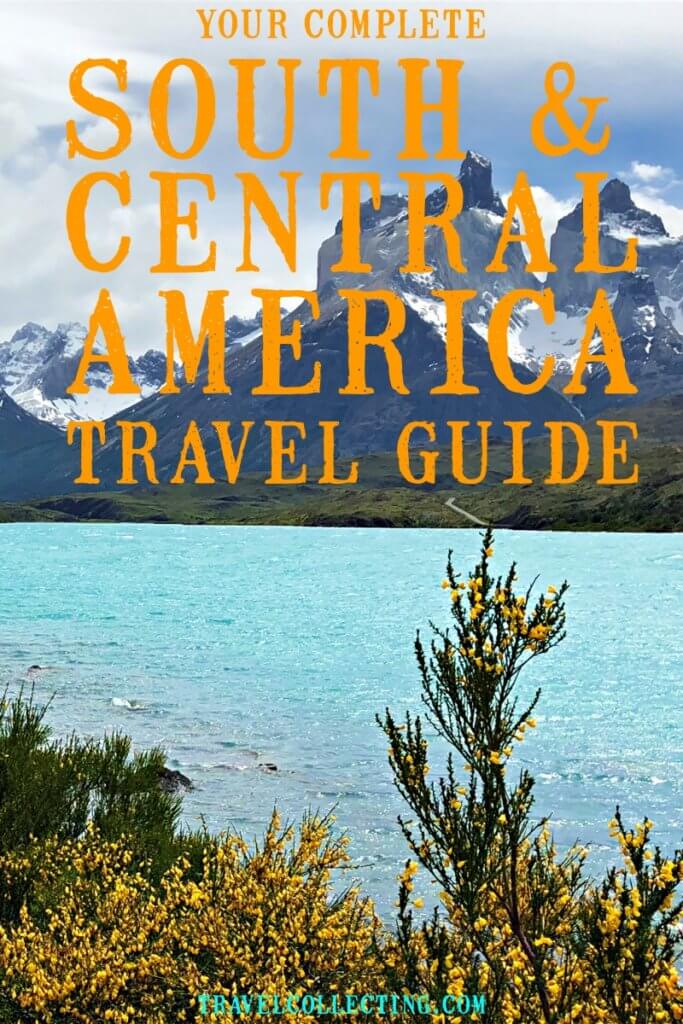
About the author

Travel Collecting is a participant in the Amazon.com Services LLC Associates Program. As an Amazon Associate I earn from qualifying purchases.








